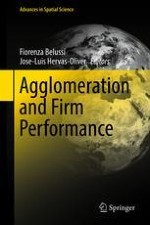2018 | OriginalPaper | Buchkapitel
Where Should I Locate My Hotel? An In-Depth Analysis of the Cluster Effect on Hotel Performance
verfasst von : Angel Peiró-Signes, Marival Segarra-Oña, Rohit Verma, Luis Miret-Pastor
Erschienen in: Agglomeration and Firm Performance
Aktivieren Sie unsere intelligente Suche, um passende Fachinhalte oder Patente zu finden.
Wählen Sie Textabschnitte aus um mit Künstlicher Intelligenz passenden Patente zu finden. powered by
Markieren Sie Textabschnitte, um KI-gestützt weitere passende Inhalte zu finden. powered by
